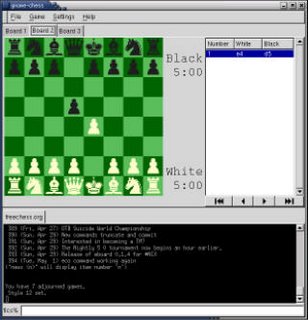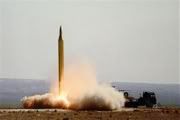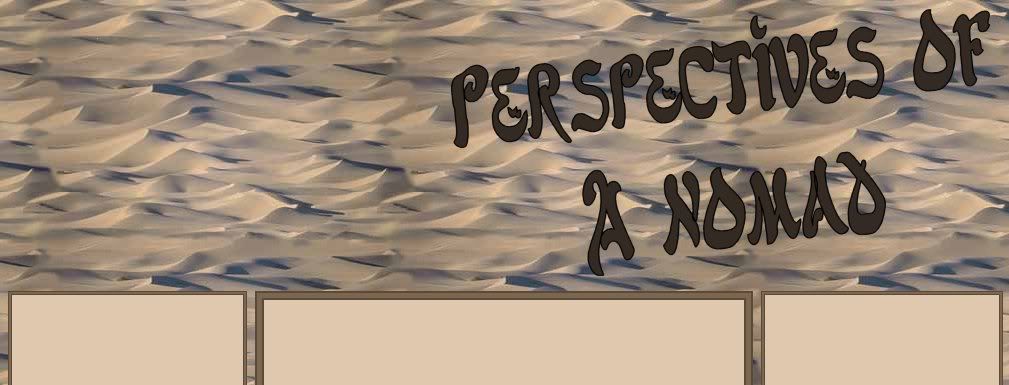Tuesday, April 04, 2006
Iranian War Games: The Chess Match Continues
Are you a chess player? I really enjoy the game, and while I’m not great at it, I can hold my own. I have one friend (I say that loosely as we haven’t spoken in probably a year now) who I used to always play against; we are at similar levels, both competitive about the games, and we normally split our games. Most games involve similar openings, and while I’m sure there’s a name for the opening, I can only describe it, at tell you that we are seeing it played out in real life by Iran. We are in the middle of a chess match, my friends, and the stakes could not be higher!
 To begin the game, you move your Queen’s pawn out two spaces, putting it in a position which you can fortify to take some control over the center 4 spaces in the board. Most chess people will tell you the game is won or lost in controlling the center four spaces on the chess board, and by moving out your pawn, you take quick control of your side of the territory, and threaten your opponent’s side of the territory. Normally this will cause your opponent to move his king’s pawn up 2 spaces, threatening your king, but clearly a defensive move, protecting the board’s center. And the tone for the entire conflict is set.
To begin the game, you move your Queen’s pawn out two spaces, putting it in a position which you can fortify to take some control over the center 4 spaces in the board. Most chess people will tell you the game is won or lost in controlling the center four spaces on the chess board, and by moving out your pawn, you take quick control of your side of the territory, and threaten your opponent’s side of the territory. Normally this will cause your opponent to move his king’s pawn up 2 spaces, threatening your king, but clearly a defensive move, protecting the board’s center. And the tone for the entire conflict is set.
In the conflict of West vs. Middle East, with main players being the United States and Iran, the middle grounds are clear: for the West, Europe is the central territory, where for Iran, the Mediterranean region, with heavy emphasis on Israel, Syria and Egypt, is the central squares.
If you allow this analogy, then Iran moved out its first pawn with the Mohammed Cartoon Protests. I spoke about this extensively in a February 17th post, so you can refer there for more information (sorry about the formatting, Blogger sucks). But the basics is that these protests were not a natural reaction to the cartoons, as most of us accept, but that they were contrived by, predominantly Iran and it’s ally Syria. The post then theorizes that this move was meant to specifically put the West, predominantly Europe, on the defensive, which it did, even causing renunciations of our basic freedoms that continue today.
In the chess game, you are on the attack; you want to continue in that direction, but flexing your muscles a bit, giving your opponent many possible modes of attack for upcoming moves. The move to make is moving out the king side knight. The knight protects your pawn, attacks your opponents pawn, and also supports a wide variety of moves that you can make on the attack on your next turn. The key is clearly the flexibility of the knight, the variety of squares that can be protected, or which the knight can move to either to attack or to set up the next attack. Plus, most importantly, it creates a corridor behind the pawn that can be used by the king side bishop and the knight to attack the queen.
Iran’s knight? This week we have been seeing war games in Iran, which Iran states are to “gain the necessary and needed readiness to decisively reply to any kind of threats." But really these war games have been an exhibition of Iran’s new military capability (or supposed capability, depending on who you listen to). They are the introduction of a weapon, the Iranian military that can attack or defend with a great deal of flexibility, based on the specific needs of any specific conflict.
 Sunday, Iran announced the successful test of an underwater missile with a speed of, get this, 223 mph! What the hell?!?!? This is 3-4 times faster than your average torpedo, and is the same speed as the Russian VA-111, the fastest waterborne object. China and Germany have been trying to replicate the technology since 2004. But this missile has a huge advantage over the VA-111 – it can house a warhead. It is not clear if the warhead can be nuclear, but regardless, this is a huge development. Plus, to launch it, they tested “midget submarines” capable of firing the missiles. No details there.
Sunday, Iran announced the successful test of an underwater missile with a speed of, get this, 223 mph! What the hell?!?!? This is 3-4 times faster than your average torpedo, and is the same speed as the Russian VA-111, the fastest waterborne object. China and Germany have been trying to replicate the technology since 2004. But this missile has a huge advantage over the VA-111 – it can house a warhead. It is not clear if the warhead can be nuclear, but regardless, this is a huge development. Plus, to launch it, they tested “midget submarines” capable of firing the missiles. No details there.
Monday, Iran tested a second torpedo. This torpedo is fired from a surface-bound ship, with enough power to “break a heavy warship” plus the ability to fire down into the water to take out a submarine at any depth. And tomorrow will be more of the same. “Tomorrow, we will see other missile test firings by the Revolutionary Guards in the 'Great Prophet' war game," Rear Admiral Dehqani told state television, which only gave his family name. They also announced last week a radar-evading missile.
Put these four missiles together, and you see a weapon with the same flexibility of the knight, with the ability to be used for both offense and defense, and the ability to support other offensive moves that could happen in the future. Add in that Iran has conducted the majority of these war games in the Straights of Homuz, which sees the transportation of 80% of the region’s oil supplies, and a clear corridor has been created right to the heart of the needs of the West.
Still, there are questions as to the validity of the new Iranian weapons, or that they may be exaggerating the new capabilities. Up until now, Iran has been thought to have a vastly outdated weapons system, which counterbalances the vast number of Iranian troops. But of late they have been trying to increase their own armament production, and this may be the result.
"We know that the Iranians are always trying to improve their weapons system by both foreign and indigenous measures," Pentagon spokesman Bryan Whitman said in Washington. "It's possible that they are increasing their capability and making strides in radar absorbing materials and technology. But the Iranians have also been known to boast and exaggerate their statements about greater technical and tactical capabilities," he said.
The chess game between the West and the Middle East is not your typical chess match, as the Middle East does not have use of its queen yet. Iran’s queen is a nuclear missile, and there are a variety of estimates as to how long it will take for Iran to get a nuke. Today, former UN weapons inspector Hans Blix said Iran is 5 years away from developing a nuke. But in recent weeks, estimates as low as 3 years have been put forth, and all of those estimates could go out the window if Iran succeeds in purchasing a nuke from Russia, China, or another source.
Still, with the queen not in play, Iran will maintain a slower pace than we may see otherwise, as the West still holds the significant advantage of being capable of complete devastation. But in the future, we should be looking for the bullet; in the chess game, it would be moving the bishop out so that it is protected by the knight, and so that it attacks the queen and the center of the board simultaneously. This forces your opponent to sacrifice the center to save the queen.
we may see otherwise, as the West still holds the significant advantage of being capable of complete devastation. But in the future, we should be looking for the bullet; in the chess game, it would be moving the bishop out so that it is protected by the knight, and so that it attacks the queen and the center of the board simultaneously. This forces your opponent to sacrifice the center to save the queen.
How would this play out? I can’t tell for sure, but I would expect it to come as some sort of challenge both to Israel and the West, where the West cannot defend Israel without considerable sacrifice. Perhaps our oil supply will be threatened, I don’t know. What I do know is that, like in the chess game, you only have two ways to defend against such a situation: either fortify against it before the move is made, or go on the attack so your opponent will sacrifice more than you do. We need to looking for potential lines of attack now, and defending against them, because this move is almost completed, and who knows when the next begins.
technorati tags: Iran, War Games, Chess, Missile, West, Middle East, Conflict, Straights of Homuz
Posted by Scottage at 1:15 AM /
| |



 To begin the game, you move your Queen’s pawn out two spaces, putting it in a position which you can fortify to take some control over the center 4 spaces in the board. Most chess people will tell you the game is won or lost in controlling the center four spaces on the chess board, and by moving out your pawn, you take quick control of your side of the territory, and threaten your opponent’s side of the territory. Normally this will cause your opponent to move his king’s pawn up 2 spaces, threatening your king, but clearly a defensive move, protecting the board’s center. And the tone for the entire conflict is set.
To begin the game, you move your Queen’s pawn out two spaces, putting it in a position which you can fortify to take some control over the center 4 spaces in the board. Most chess people will tell you the game is won or lost in controlling the center four spaces on the chess board, and by moving out your pawn, you take quick control of your side of the territory, and threaten your opponent’s side of the territory. Normally this will cause your opponent to move his king’s pawn up 2 spaces, threatening your king, but clearly a defensive move, protecting the board’s center. And the tone for the entire conflict is set. Sunday, Iran announced the successful test of an underwater missile with a speed of, get this, 223 mph! What the hell?!?!? This is 3-4 times faster than your average torpedo, and is the same speed as the Russian VA-111, the fastest waterborne object. China and Germany have been trying to replicate the technology since 2004. But this missile has a huge advantage over the VA-111 – it can house a warhead. It is not clear if the warhead can be nuclear, but regardless, this is a huge development. Plus, to launch it, they tested “midget submarines” capable of firing the missiles. No details there.
Sunday, Iran announced the successful test of an underwater missile with a speed of, get this, 223 mph! What the hell?!?!? This is 3-4 times faster than your average torpedo, and is the same speed as the Russian VA-111, the fastest waterborne object. China and Germany have been trying to replicate the technology since 2004. But this missile has a huge advantage over the VA-111 – it can house a warhead. It is not clear if the warhead can be nuclear, but regardless, this is a huge development. Plus, to launch it, they tested “midget submarines” capable of firing the missiles. No details there. we may see otherwise, as the West still holds the significant advantage of being capable of complete devastation. But in the future, we should be looking for the bullet; in the chess game, it would be moving the bishop out so that it is protected by the knight, and so that it attacks the queen and the center of the board simultaneously. This forces your opponent to sacrifice the center to save the queen.
we may see otherwise, as the West still holds the significant advantage of being capable of complete devastation. But in the future, we should be looking for the bullet; in the chess game, it would be moving the bishop out so that it is protected by the knight, and so that it attacks the queen and the center of the board simultaneously. This forces your opponent to sacrifice the center to save the queen.